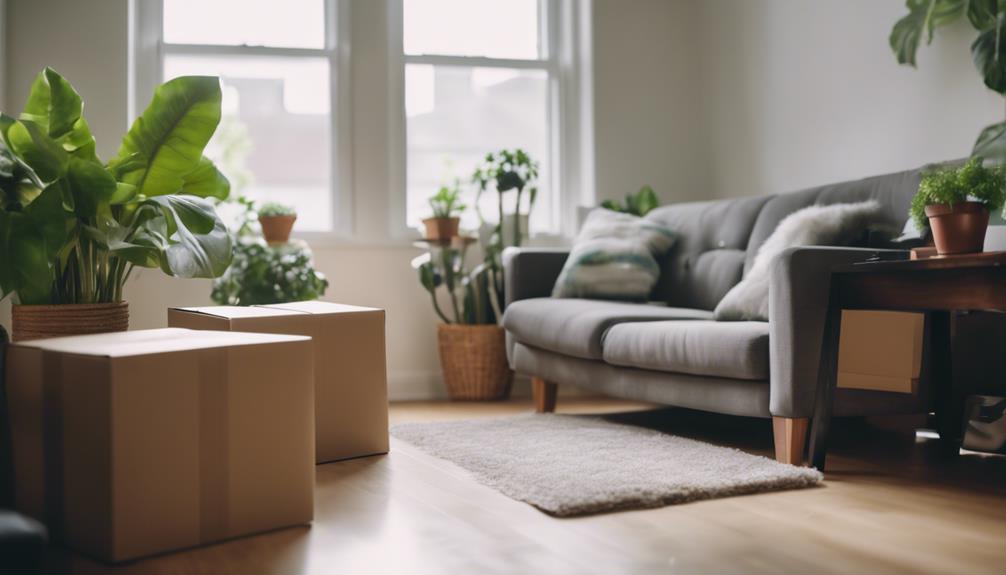You can still achieve homeownership even with poor credit by taking certain strategic steps. Begin by reviewing your credit report for any mistakes and challenging any inaccuracies. Focus on paying off your debts to boost your credit score, aiming for a minimum of 620. Consider looking into FHA loans, which accept scores as low as 580 with a small down payment. Putting down a larger down payment can also increase your chances of getting a mortgage and save you money. Lastly, explore the possibility of seller financing, where the seller serves as the lender. Keep researching these alternatives to discover the best path to your new home.
Key Takeaways
- Obtain a free credit report to identify and dispute any inaccuracies, improving your credit standing.
- Explore FHA loans, which accept credit scores as low as 580 and require minimal down payments.
- Consider seller financing to bypass traditional credit hurdles, allowing the seller to act as the lender.
- Aim to improve your credit score by paying off existing debt and maintaining a low debt-to-income ratio.
Improve Your Credit Score

To gain access to the door to homeownership, you need to start by improving your credit score.
Begin by obtaining a free credit report from AnnualCreditReport.com and review it for inaccuracies. If you find errors, dispute them with the credit bureau to verify your report reflects your true financial situation.
Next, focus on paying off outstanding balances, as this can help boost your score. Aiming for a score of 760 or higher is ideal, but a score above 620 is generally acceptable for loan approval.
Remember, the higher your credit score, the better your chances of securing a favorable mortgage.
Take these steps seriously, and you'll be one step closer to owning your dream home.
Manage Your Debt
Managing your debt effectively is essential for increasing your chances of securing a mortgage and achieving homeownership.
Start by calculating your debt-to-income (DTI) ratio; aim for 43% or lower. This means your total monthly debt shouldn't exceed $43 for every $100 of income.
To improve your DTI, prioritize paying down existing debt instead of accumulating new obligations. Consider making larger payments to reduce your debt faster.
Additionally, avoid taking on new loans during the mortgage application process, as this can negatively impact your DTI.
Explore FHA Loan Options

Have you considered exploring FHA loan options as a viable path to homeownership despite your bad credit?
FHA loans are designed for individuals like you, with credit scores starting at 580, allowing for a down payment as low as 3.5%. If your score falls between 500 and 579, you'll need a 10% down payment, but don't worry—this is still more accessible than many conventional loans.
FHA loans also come with lenient qualification criteria, making them popular among first-time buyers.
Before applying, familiarize yourself with the FHA loan process, including the necessary documentation and potential costs.
This could be your stepping stone toward achieving your dream of homeownership, even when credit challenges arise.
Consider Larger Down Payments
A larger down payment can considerably enhance your chances of securing a mortgage, especially if you're facing credit challenges. By aiming for a down payment of 20% or more, you show lenders your commitment and financial stability.
This strategy can eliminate the need for private mortgage insurance (PMI), saving you money in the long run. Additionally, with a significant down payment, you build instant equity in your home and might qualify for lower interest rates, resulting in smaller monthly payments.
It's worth weighing the options between making a low down payment now or saving up for a larger sum. Ultimately, a larger down payment could be your ticket to homeownership despite bad credit.
Investigate Seller Financing

Exploring seller financing can open new doors for homeownership when traditional loan options seem out of reach. In this arrangement, the seller acts as the lender, allowing you to bypass some credit hurdles.
You'll sign a promissory note outlining the loan terms, while the seller retains the deed of trust until you pay off the home. This type of financing might be rare—less than 10% of sellers offer it—but it can be a lifeline.
Just ascertain you understand the terms, including interest rates and payment schedules. If you find a willing seller, this could provide a viable path to ownership, even if your credit isn't perfect.
It's worth investigating!
Can I Still Upgrade My Home Despite Having Bad Credit?
Yes, you can still upgrade your home despite having bad credit. There are options for transforming home with affordable luxury even with a less-than-perfect credit score. Consider looking for financing options specifically tailored for individuals with bad credit, and explore DIY home improvement projects to save money.
How Can Innovative Storage Solutions Help in Improving Bad Credit for Homeownership?
Innovative storage solutions can help improve bad credit for homeownership by decluttering and organizing living spaces, which can increase the attractiveness and value of a home. By utilizing effective storage solutions, homeowners can create a more appealing environment, potentially leading to better loan terms and financial opportunities.
Can Having Bad Credit Affect My Ability to Get Furniture Savings?
Yes, having bad credit can affect your ability to get incredible furniture savings today. Many furniture retailers offer special financing or discounts to customers with good credit. If you have bad credit, you may not qualify for these savings, and you may end up paying higher interest rates.
Conclusion
In the journey to homeownership, don't let bad credit be a roadblock; instead, think of it as a speed bump you can overcome.
By improving your credit score, managing debt, and exploring flexible financing options, you're setting yourself up for success.
Remember, every step you take brings you closer to the front door of your new home.
With determination and the right strategies, you'll soon find yourself holding the keys to your dream.









